Abstract
OBJECTIVES: This study examined trends in safety belt use by age, sex, race/ethnicity, education, and type of safety belt law. METHODS: We analyzed Behavioral Risk Factor Surveillance System data on safety belt use from 33 states for 1987 through 1993 and used linear regression models to determine trends in prevalence. RESULTS: Asian/Pacific Islanders and Hispanics had the highest safety belt use among racial/ethnic groups. Prevalence varied little from age 25 through 64 years in all years, but averaged 25 percentage points higher in states with primary laws than in states with no belt laws. Overall safety belt use increased by an average 2.7 +/- 0.1 percentage points per year and varied little across most demographic groups, but there was no significant increase for Black males aged 18 through 29 years. CONCLUSIONS: The generally consistent increased in safety belt use across demographic groups is in sharp contrast to trends in other health-risk behaviors. States should enact primary safety belt laws and focus safety belt use efforts towards young Black males.
Full text
PDF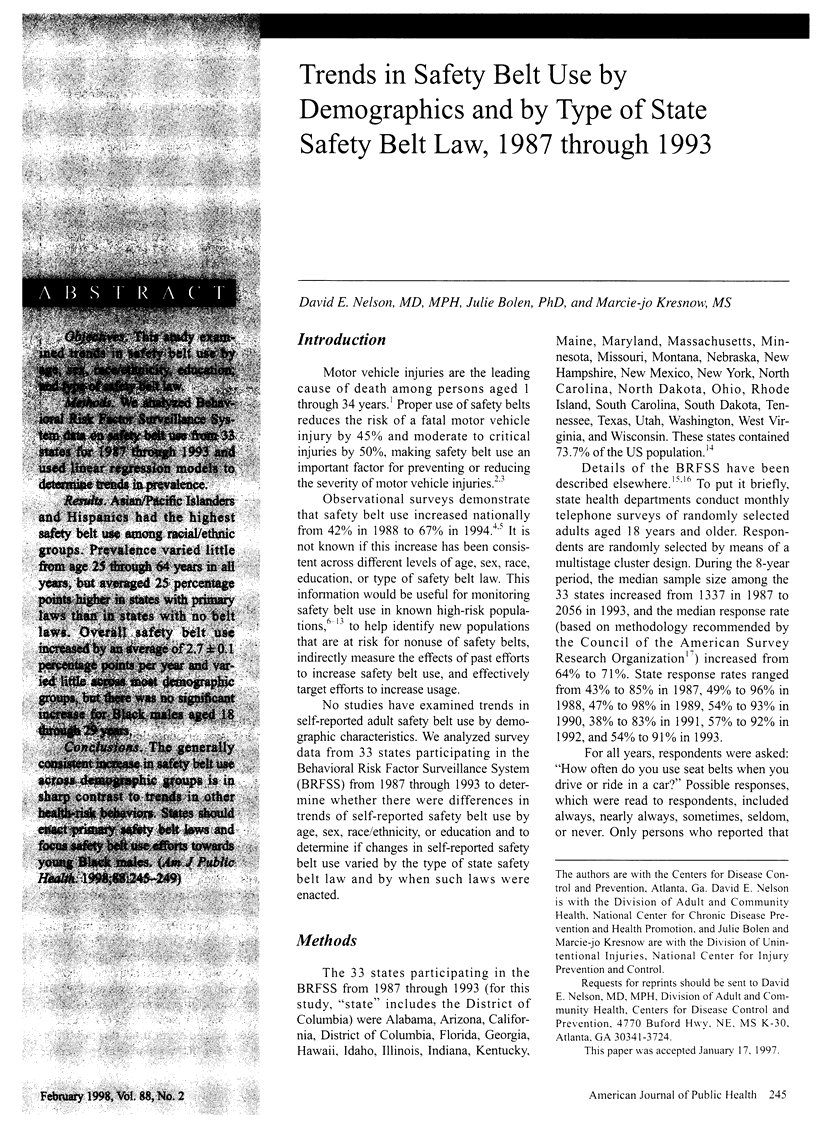
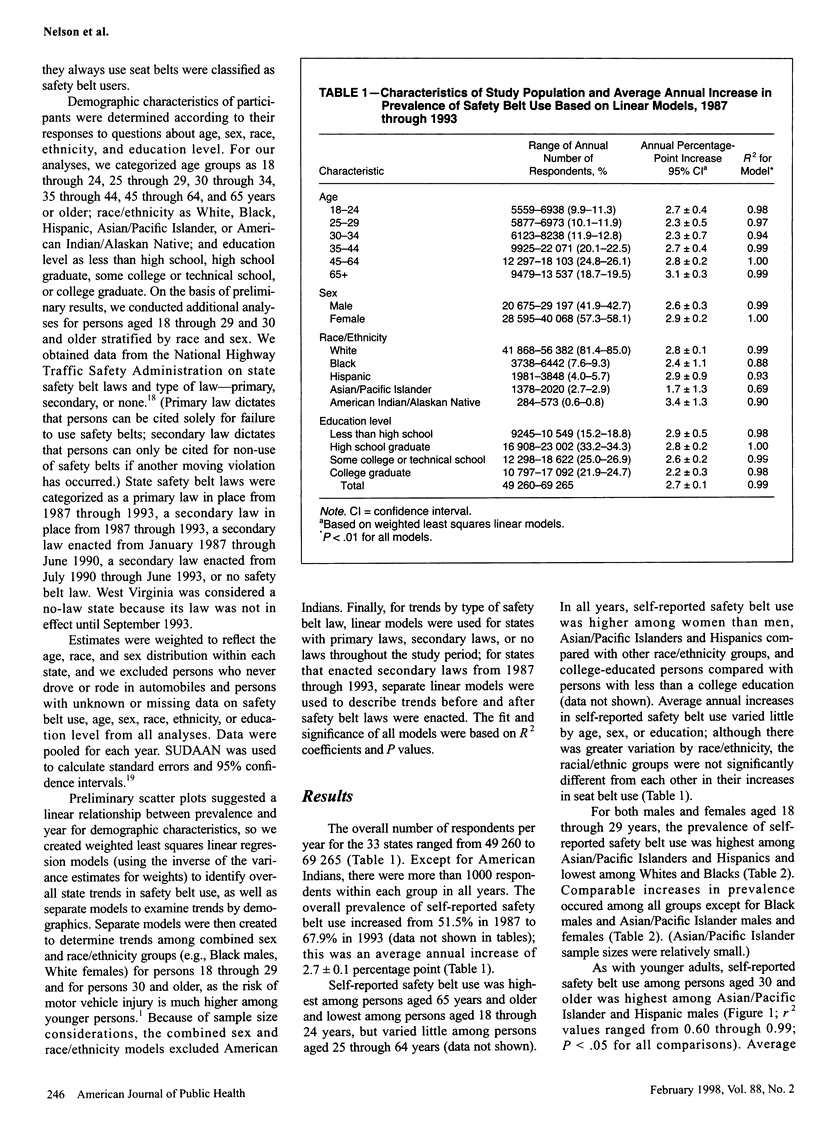
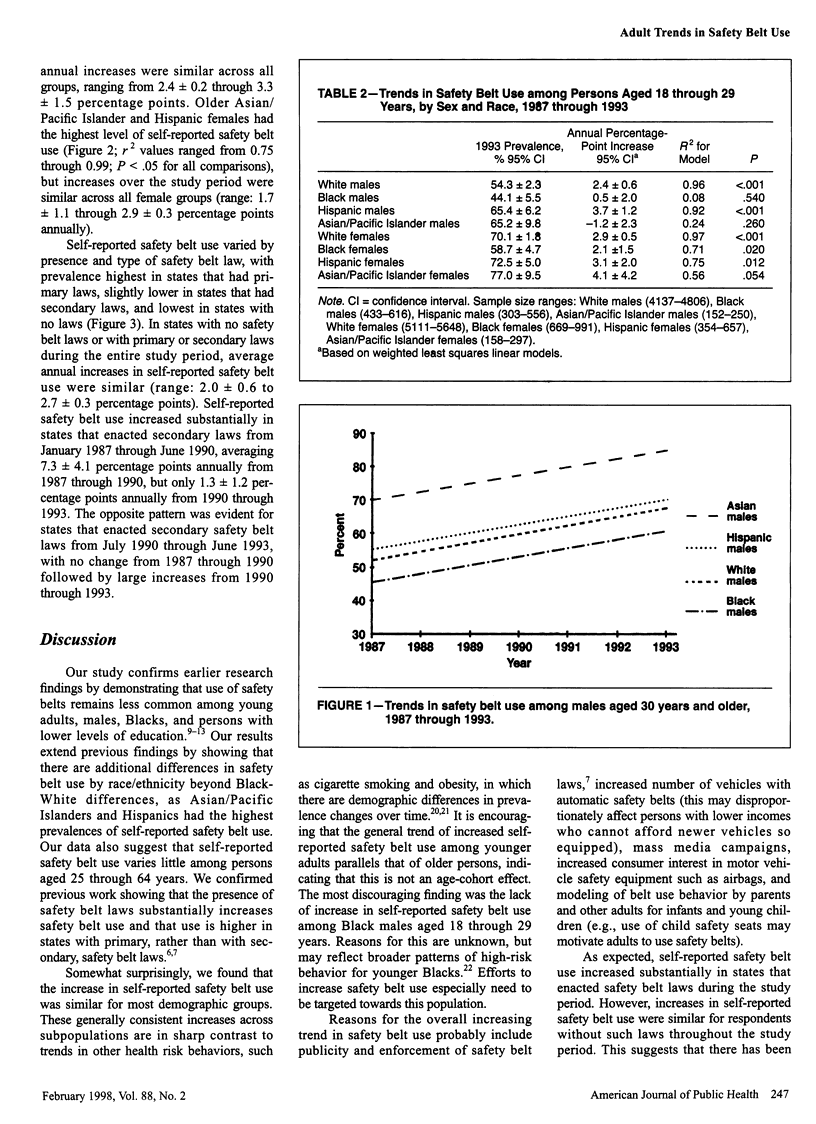
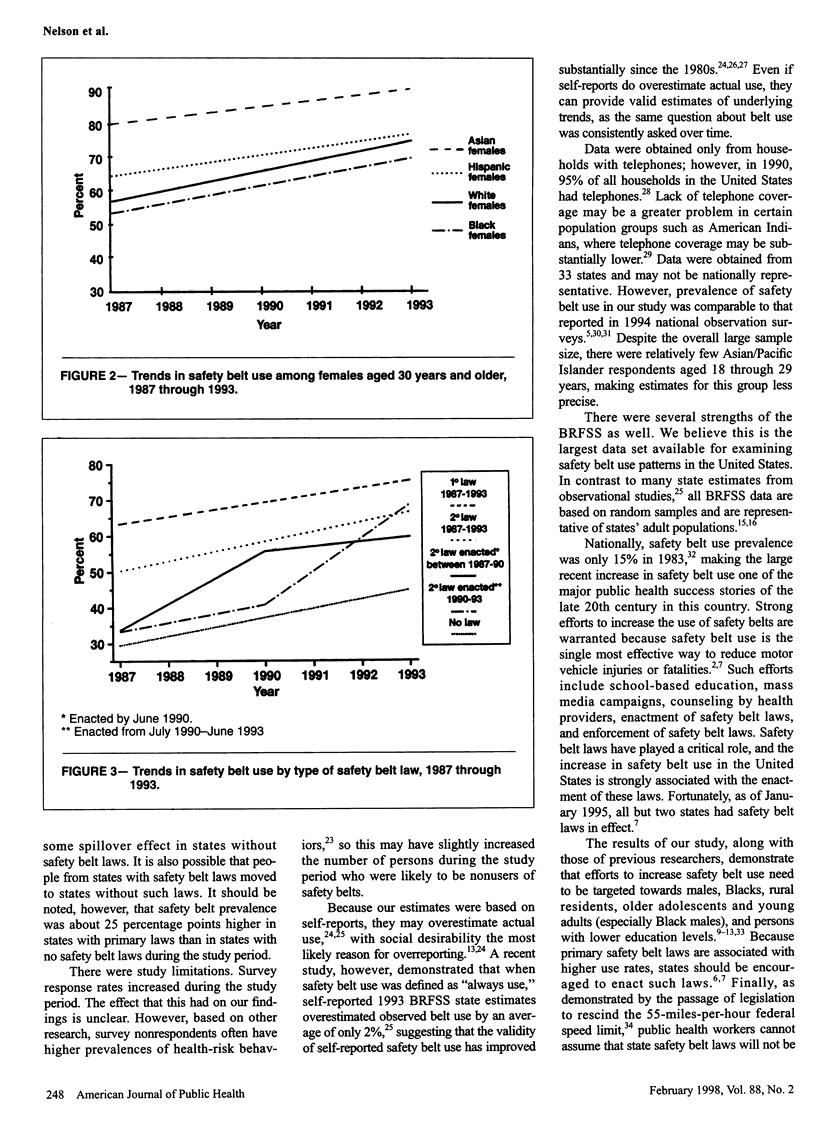
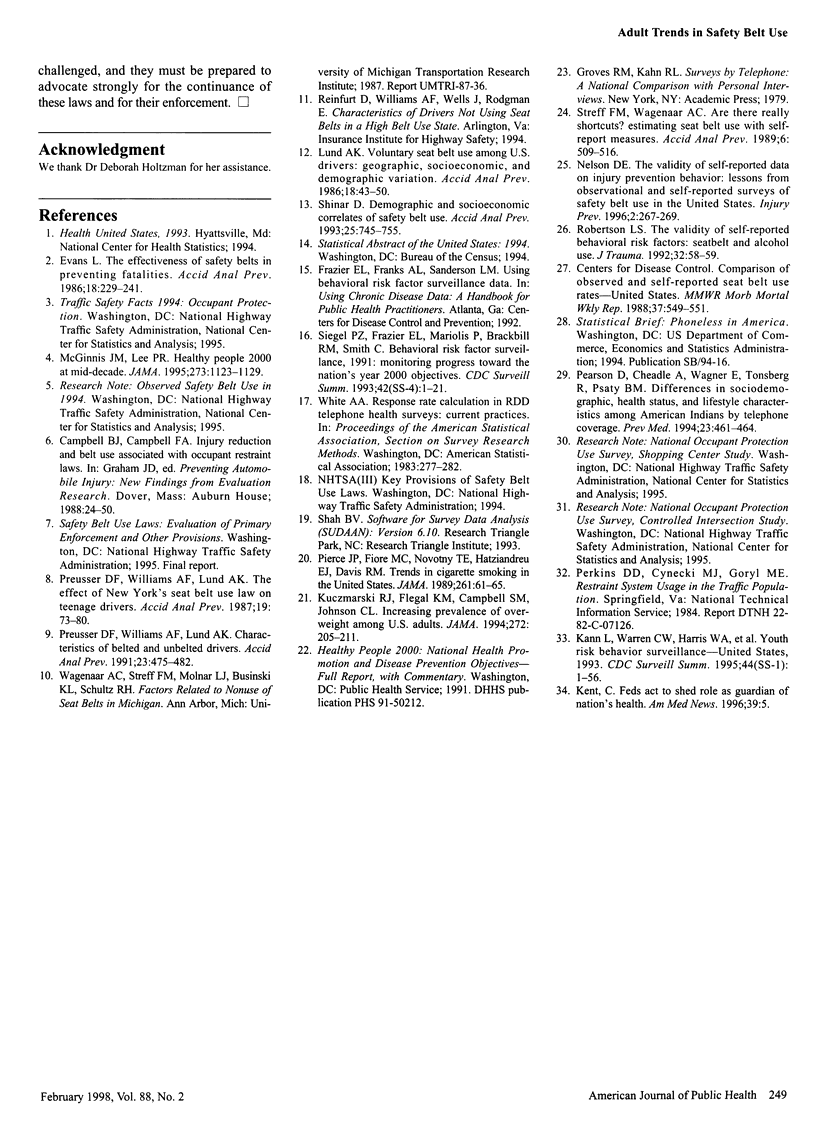
Selected References
These references are in PubMed. This may not be the complete list of references from this article.
- Evans L. The effectiveness of safety belts in preventing fatalities. Accid Anal Prev. 1986 Jun;18(3):229–241. doi: 10.1016/0001-4575(86)90007-2. [DOI] [PubMed] [Google Scholar]
- Kann L., Warren C. W., Harris W. A., Collins J. L., Douglas K. A., Collins M. E., Williams B. I., Ross J. G., Kolbe L. J. Youth risk behavior surveillance--United States, 1993. MMWR CDC Surveill Summ. 1995 Mar 24;44(1):1–56. [PubMed] [Google Scholar]
- Kuczmarski R. J., Flegal K. M., Campbell S. M., Johnson C. L. Increasing prevalence of overweight among US adults. The National Health and Nutrition Examination Surveys, 1960 to 1991. JAMA. 1994 Jul 20;272(3):205–211. doi: 10.1001/jama.272.3.205. [DOI] [PubMed] [Google Scholar]
- Lund A. K. Voluntary seat belt use among U.S. drivers: geographic, socioeconomic and demographic variation. Accid Anal Prev. 1986 Feb;18(1):43–50. doi: 10.1016/0001-4575(86)90035-7. [DOI] [PubMed] [Google Scholar]
- McGinnis J. M., Lee P. R. Healthy People 2000 at mid decade. JAMA. 1995 Apr 12;273(14):1123–1129. [PubMed] [Google Scholar]
- Pearson D., Cheadle A., Wagner E., Tonsberg R., Psaty B. M. Differences in sociodemographic, health status, and lifestyle characteristics among American Indians by telephone coverage. Prev Med. 1994 Jul;23(4):461–464. doi: 10.1006/pmed.1994.1063. [DOI] [PubMed] [Google Scholar]
- Pierce J. P., Fiore M. C., Novotny T. E., Hatziandreu E. J., Davis R. M. Trends in cigarette smoking in the United States. Projections to the year 2000. JAMA. 1989 Jan 6;261(1):61–65. [PubMed] [Google Scholar]
- Preusser D. F., Williams A. F., Lund A. K. Characteristics of belted and unbelted drivers. Accid Anal Prev. 1991 Dec;23(6):475–482. doi: 10.1016/0001-4575(91)90013-u. [DOI] [PubMed] [Google Scholar]
- Preusser D. F., Williams A. F., Lund A. K. The effect of New York's seat belt use law on teenage drivers. Accid Anal Prev. 1987 Apr;19(2):73–80. doi: 10.1016/0001-4575(87)90026-1. [DOI] [PubMed] [Google Scholar]
- Robertson L. S. The validity of self-reported behavioral risk factors: seatbelt and alcohol use. J Trauma. 1992 Jan;32(1):58–59. doi: 10.1097/00005373-199201000-00012. [DOI] [PubMed] [Google Scholar]
- Shinar D. Demographic and socioeconomic correlates of safety belt use. Accid Anal Prev. 1993 Dec;25(6):745–755. doi: 10.1016/0001-4575(93)90038-x. [DOI] [PubMed] [Google Scholar]
- Siegel P. Z., Frazier E. L., Mariolis P., Brackbill R. M., Smith C. Behavioral Risk Factor Surveillance, 1991: monitoring progress toward the nation's year 2000 health objectives. MMWR CDC Surveill Summ. 1993 Aug 27;42(4):1–21. [PubMed] [Google Scholar]
- Streff F. M., Wagenaar A. C. Are there really shortcuts? Estimating seat belt use with self-report measures. Accid Anal Prev. 1989 Dec;21(6):509–516. doi: 10.1016/0001-4575(89)90066-3. [DOI] [PubMed] [Google Scholar]


